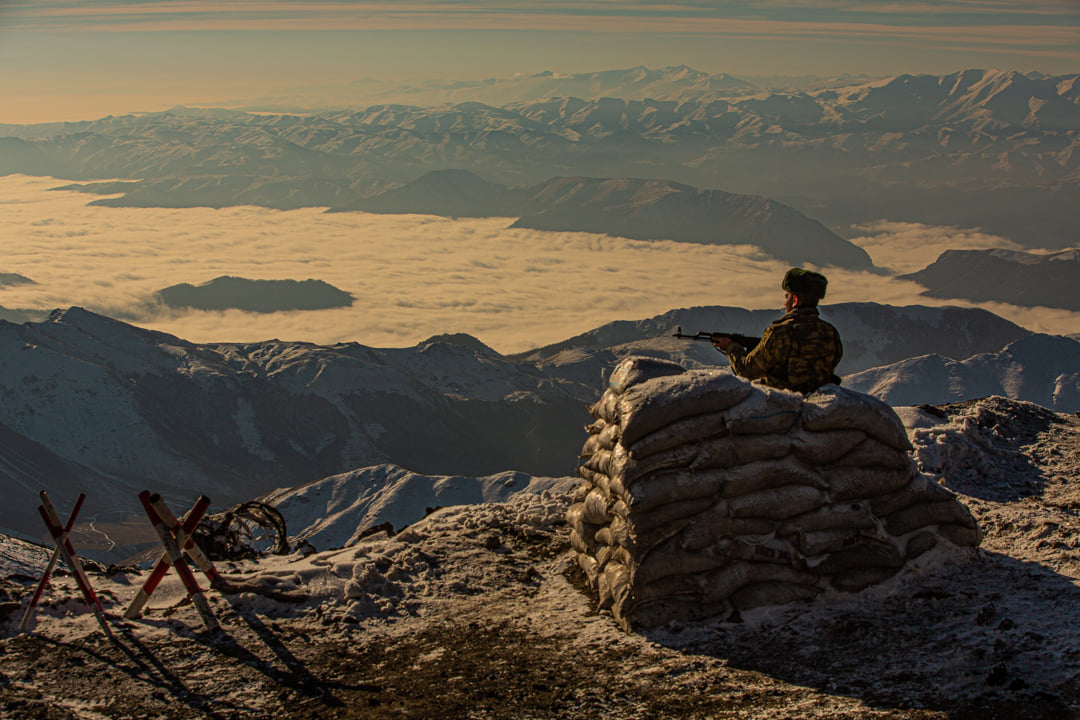Following the victory in a war with Armenia over the Karabakh region last year, the government of Azerbaijan remains keen on further modernizing the armament of the national army with cutting-edge defense products.
The country’s Defense Minister, Colonel-General Zakir Hasanov discussed with the Belarus Ambassador to Baku the opportunities for expanding the defense cooperation with Belarus, one of the suppliers of arms to the Caspian country. The meeting highlighted the interest of both sides in bringing the current military-technical cooperation to the next level.
The military-technical cooperation between Belarus and Azerbaijan has been actively developing since 2002. Its overall volume is estimated at over $500 million. During this period, the Azerbaijani armed forces reportedly received hundreds of defense products of various types from Belarus, including T-72 tanks (153 units), 203-mm 2S7 Pion self-propelled guns (12 units), 122-mm D-30 towed howitzers (120 units), BTR-70 armored personnel carriers (60 units), as well as anti-aircraft missile systems T38 "Stilet" (up to 20 units), SU-25 attack aircraft (11 units), and 301-mm multiple launch rocket systems "Polonaise" (10 units).
Moreover, the enterprises of the Belarusian military-industrial complex carried out for the Azerbaijan army the modernization of the Osa-AKM air defense system to the Osa-1T level, as well as the S-125 air defense system to the Pechora-2T level. In addition, the supplies of upgraded Buk-MB air defense systems and Skif anti-tank complexes of joint Ukrainian-Belarusian production to Azerbaijan have also been reported.
Azerbaijani armed forces have actively deployed various types of arms over 44 days of war with Armenia in the Karabakh (Garabagh) region, an internationally recognized territory of Azerbaijan. The latest outbreak of war in the region started on September 27 last year after Armenia’s forces deployed in the occupied Azerbaijani lands shelled military positions and civilian settlements of Azerbaijan. Azerbaijani troops took immediate counter-offensive measures to push back the attack. The war ended with a tripartite ceasefire agreement signed by Armenia, Azerbaijan and Russia on November 10. By that time, the Azerbaijani army liberated over 300 settlements, including five major cities in the Karabakh region from Armenia’s nearly 30-year-long illegal occupation. Armenia returned the districts of Aghdam, Kalbajar, and Lachin to Azerbaijan by December 1 in non-combat conditions set by the ceasefire document.
“Now the war is a great experience. We must draw the right conclusions from this experience. We have had great success. At the same time, there were some shortcomings during the war,” the president said, adding that the model of the Turkish armed forces will be applied in the further development of the Azerbaijani army.
Azerbaijan and Turkey have recently agreed to the import of Turkey-made SOM-B2 air-to-surface cruise missiles. The agreement was reached during the Azerbaijani prime minister’s visit to Turkey in February. Turkish Vice President Fuat Oktay said Ankara is ready to supply advanced aviation munitions, including SOM-B2 missiles to Azerbaijan. The missiles of the SOM family, including SOM-A, SOM-B1, and SOM-B2 is equipped with an inertial-satellite guidance system and a high-explosive warhead weighing 230 kilograms. The overall weight of a 4-meter-long rocket is 600 kilograms. The upgraded version of the SOM-B1 missile is additionally equipped with an infrared guidance system, and its latest version SOM-B2, designed for the destruction of bunkers, is equipped with an additional penetrating warhead. The missile's strike range is 250 kilometers.
Experts believe that only two aircraft models in the Azerbaijani Air Force are capable of using SOM-class ammunition – the MiG-29 fighters and Su-24 frontline bombers.
“They [Turkey] are installing these missiles on the aircraft they currently have, mostly on the F-16. They are actively used in hostilities in Syria, in the confrontation with the Kurdish partisans. They show themselves well, so the attention of Azerbaijan to them did not surprise me,” Russian military expert Alexei Valyuzhenich said.
Azerbaijan has been actively integrating Turkey-made arms into the national army’s arsenal. The country has purchased a “T-122 Sakarya” multiple launch rocket system, TR-107 missiles, “Kasırga” rocket system, as well as Bayraktar drones from Turkey. The Bayraktar TB2 medium altitude long endurance unmanned aerial vehicles (UAV) played a crucial role in giving Azerbaijan a clear edge against Armenia in the last year’s clashes.
Azerbaijan imported the “Bora-12” sniper rifle, the “Drone Killer” anti-UAV systems, the TIGES Artillery Forward Observer Simulator, the "Shahingozu-OD" integrated electro-optical, thermal imaging system, and the “Cobra” armored patrol car from Turkey, as well. Over the past years, the overall amount of Azerbaijan’s arms imports from Turkey increased six fold to reach $256 million as of December 2020.







 Iran's senior military leaders described the drone and missile attack on Israel on April 14 night as “successful".
Iran's senior military leaders described the drone and missile attack on Israel on April 14 night as “successful".
 The number of evacuees from flooded areas in Kazakhstan has reached 97,852 people, including about 32,856 children since March 27.
The number of evacuees from flooded areas in Kazakhstan has reached 97,852 people, including about 32,856 children since March 27.
 Iranian President Ebrahim Raisi warned Israel that it would face a "real and extensive" response if it makes any "mistake" following Tehran’s missi...
Iranian President Ebrahim Raisi warned Israel that it would face a "real and extensive" response if it makes any "mistake" following Tehran’s missi...



